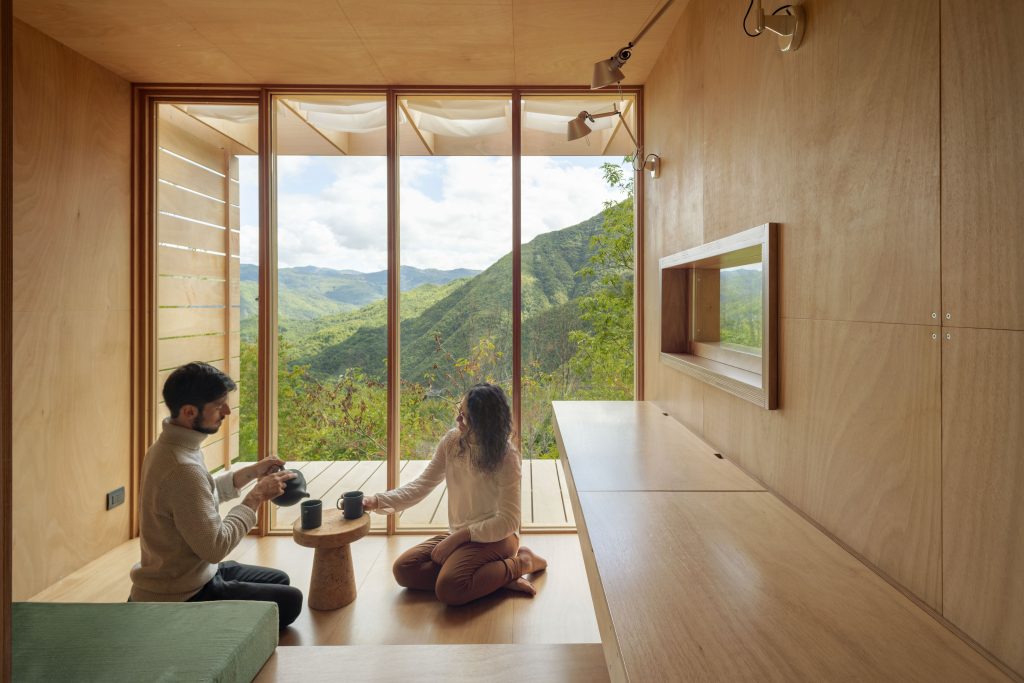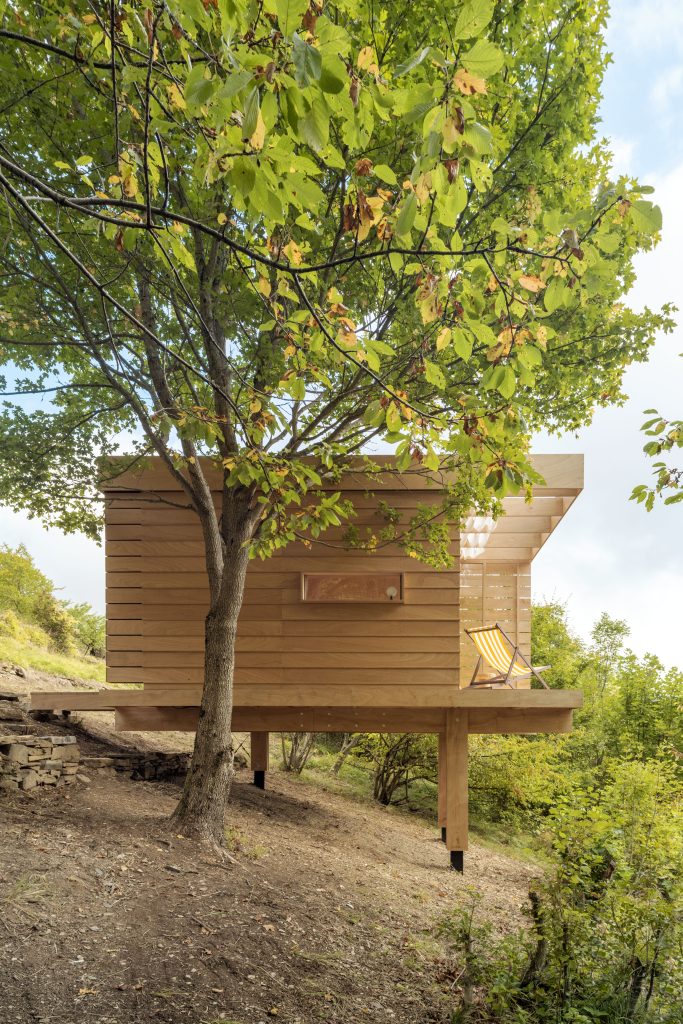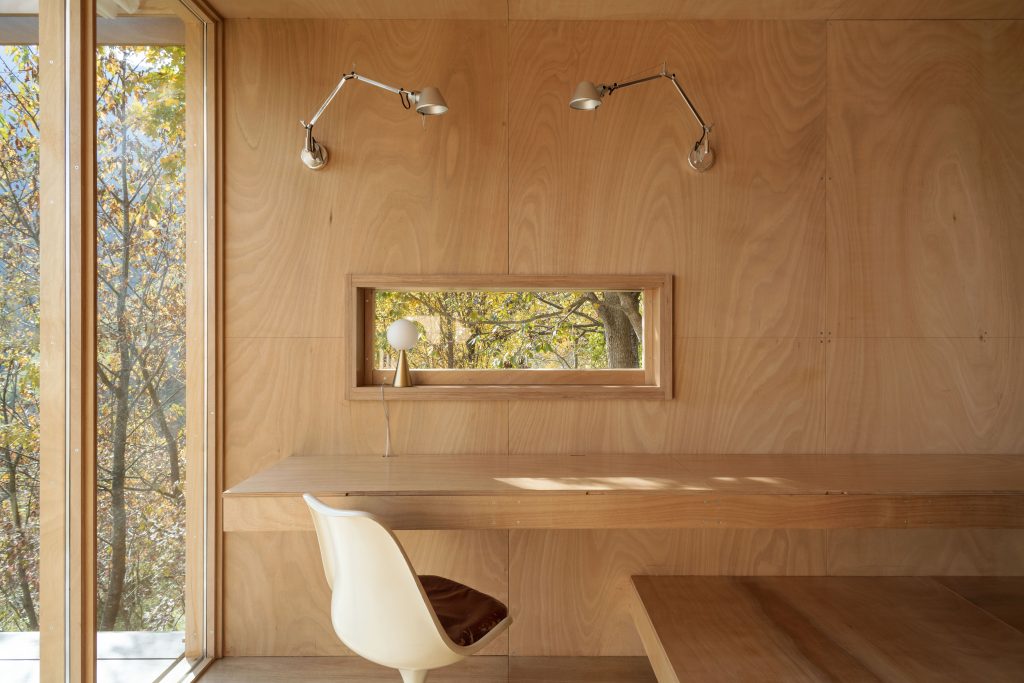




A cabin in Italy provides a place for quiet reflection.
The Hermitage, a prototype from architectural firm Llabb, is built using a simple, modular system that responds to environmental and social needs. It exemplifies minimalist living and a relationship to the outdoors.
Made entirely of wood, the 12-sq.m cabin, located in Trebbia Valley, Italy, is designed as a space for contemplation and introspection. It’s left up to the individual to decide its function: a studio, a retreat, a teahouse, or a guesthouse.
Though the rectangular structure stands off the ground, it leaves no permanent footprint on the ground, as no concrete was used. The construction is supported by four metal brackets, fitted with wide 60 x 60 cm bases, which rest on sandstone beds. The four legs are composed of six paired wooden elements.
Horizontal plywood walls enclose the cabin on three sides. The fourth side extends into a terrace separated by four full-height glazed panels, one of which can be opened. The fenestration follows the modularity of the brise-soleil that surmounts the terrace, which, in turn, continues the roof structure. There is a small horizontal window on the southwest side. The entrance door is accessible through a small boardwalk.
The boards of the three exterior walls are mounted in such a way as to leave a gap that produces a filter effect. Where the walls enclose the interior space, this gap is filled with thin, slightly protruding profiles.
At the floor level and at the top of the structure, cornices
run uninterrupted, projecting from the walls and delimiting the composition.
“The simple modularity of the structure makes it easily scalable and adaptable into different compositions. The basicness of construction, the minimal impact on the land, and the use of natural materials that can be easily sourced locally enable a respectful installation in natural contexts,” says Luca Scardulla, co-founder of Llabb.
At the entrance level, a countertop runs along the entire right wall and serves as a seat, a desk, and storage space. The third level, to which one descends after going through the entrance, defines the largest surface area and extends onto the terrace. The wall that encloses the tiny bathroom accommodates a fold-out bed that, when open, hovers above the sofa.
“We paid special attention to the design of the interior space. Minimal and flexible, with the expansive glass wall facing the terrace, the space feels light and contemplative. The interplay between different levels offers the possibility to better manage storage spaces and technical compartments, while contributing to the definition of a graceful atmosphere,” says Federico Robbiano, co-founder of Llabb.
The walls, floor, and ceiling were pre-assembled and composed of 70 panels of weather-resistant Okoumè marine plywood (approximately 2 tons). The façades are mounted on spacer battens to create an air gap between the façade and the walls, improving the insulation. The roof is made of corrugated sheet metal. Above it, there are two photovoltaic panels, connected to a storage battery.
The Hermitage is designed to be completely off-grid. There is a compostable toilet and water canisters. However, the structure can easily be connected to a sewer system and water supply.
ARCHITECT
Llabb
Genoa, Italy
Photography
Anna Positano, Gaia Cambiaggi
Genoa, Italy






